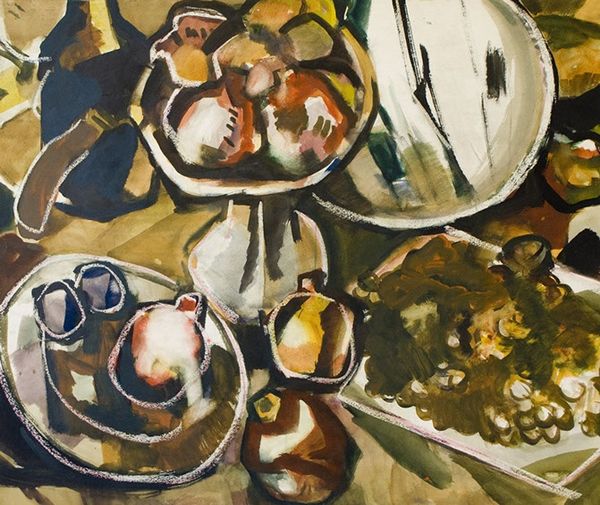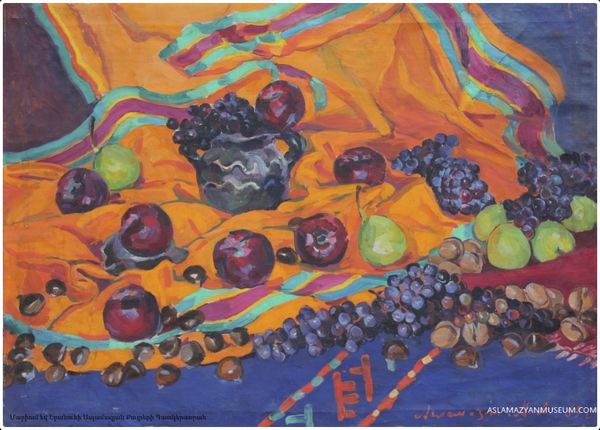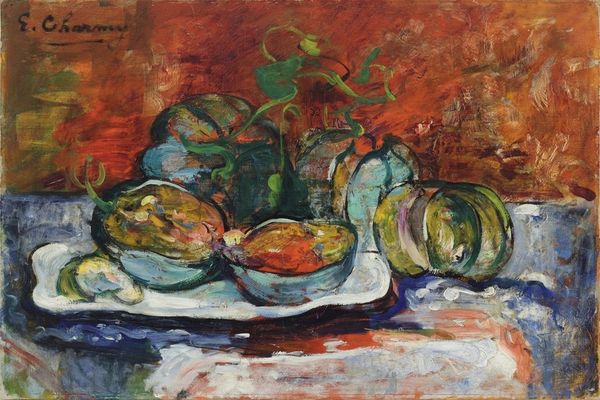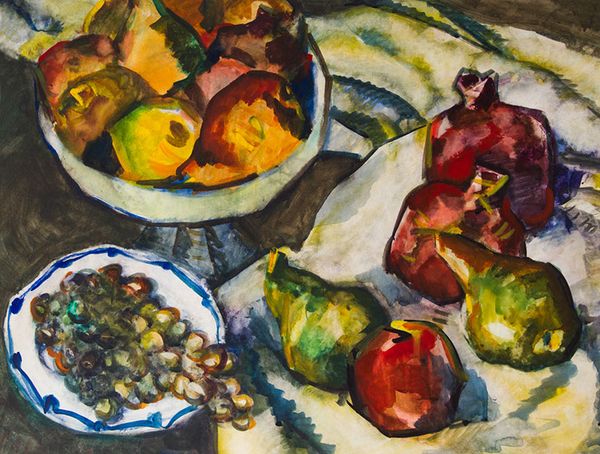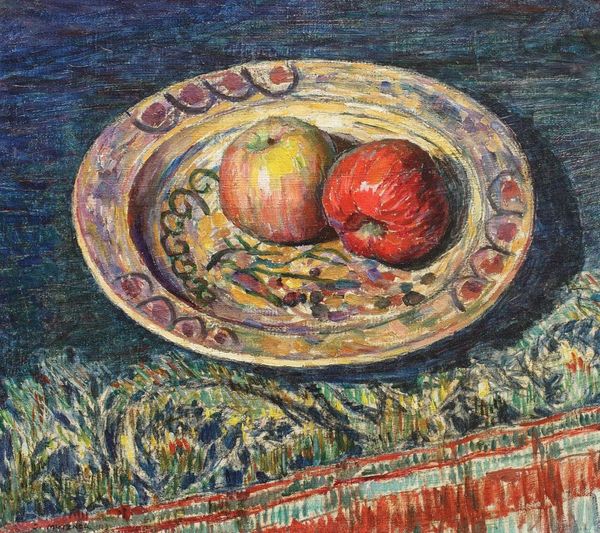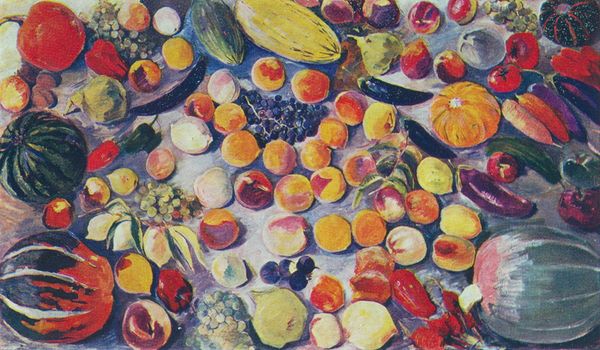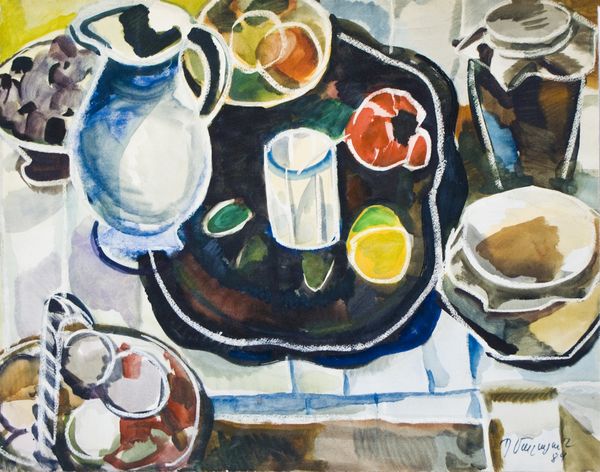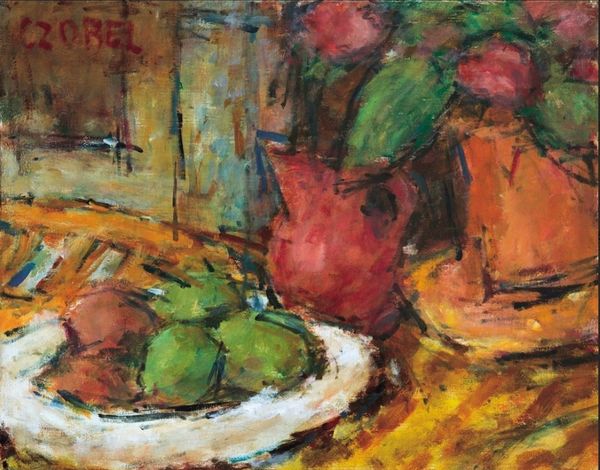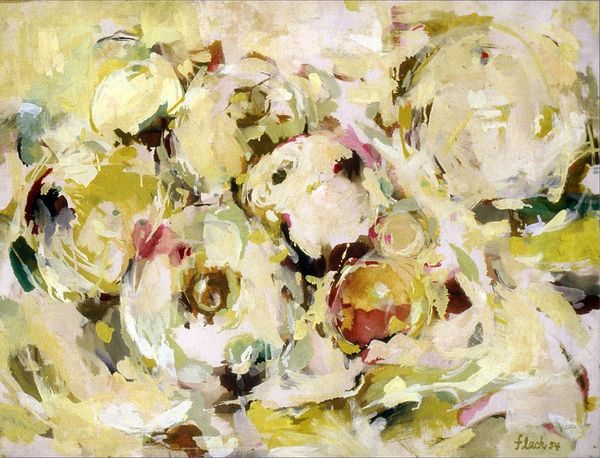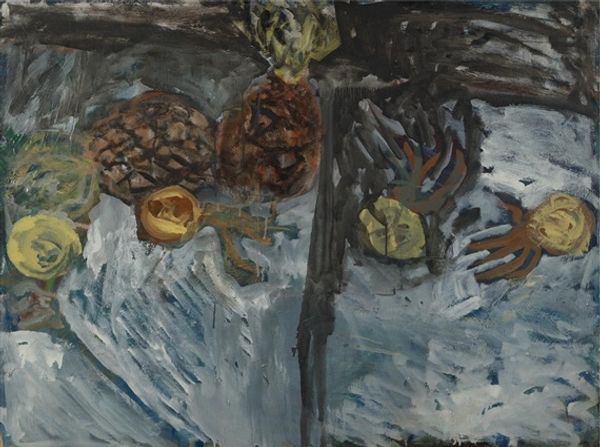
mosaic, ceramic
#
mosaic
#
ceramic
#
decorative-art
Dimensions: 83 x 136 cm
Copyright: Mariam Aslamazian,Fair Use
Editor: Here we have Mariam Aslamazian's "Armenian Fruits", a decorative ceramic mosaic from 1985. The rough textures and visible seams between the tiles give it a handcrafted feel. How do you interpret this work through its materials and process? Curator: Considering Aslamazian's "Armenian Fruits," I see a direct engagement with the materiality of ceramic mosaic as a mode of production. The deliberate choice of ceramic, a common and often overlooked medium, elevates craft to the realm of high art, doesn't it? Editor: Yes, and I wonder if the repetition of the tiles contributes to that elevation by giving it a manufactured feel, or perhaps by highlighting the intensive labor of creating each individual tile. Curator: Precisely! We need to ask, who had access to these materials, and how would that access have impacted its reception at the time? Were there particular social implications of working with such readily available resources during the Soviet era, where materials were tightly regulated? Editor: That's interesting! Perhaps its accessible nature connects it more to the everyday lives of Armenians. The fruit, too, are quite representative of Armenian agriculture and sustenance. Curator: Good point. Looking closely, you notice not just the finished piece, but the whole means of its production. Considering the social and economic factors influencing its making shifts our understanding, doesn't it? Editor: Absolutely! I hadn’t considered how the choice of material speaks volumes about access, labor, and even national identity. Curator: Material choices are rarely arbitrary, so understanding the how and why informs our comprehension.
Comments
No comments
Be the first to comment and join the conversation on the ultimate creative platform.
